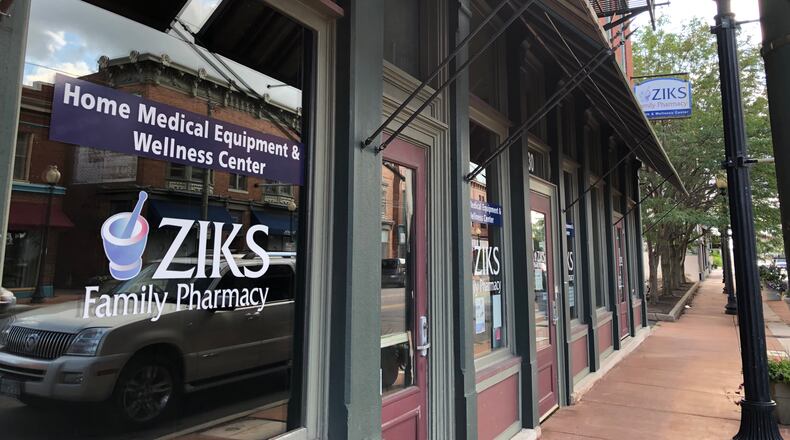ZIKS Pharmacy in the Wright Dunbar neighborhood in Dayton and Cambden Village Pharmacy in Preble County are part of a six-month pilot started Aug. 4 by CareSource, in which the Dayton-based insurance company will reimburse pharmacists for clinical services provided to Medicaid patients in Ohio.
“The pilot program is a win-win for the greater Dayton community because it improves health outcomes and will decrease hospitalizations and unnecessary ER visits for patients with chronic diseases,” Nnodum Iheme, owner of ZIKS Family Pharmacy, said in an announcement about the pilot.
Antonio Ciaccia, lobbyist with the Ohio Pharmacist Association, said the pharmacy industry is a system where people get paid more when they quickly fill a high volume of prescriptions.
“That manifests itself into a more assembly line culture,” Ciaccia said. “They’re having to fill more prescriptions faster ... But what’s also being lost in that is not just making sure that yellow pill is the yellow pill. It’s all the clinical components of what the pharmacist is supposed to be doing in conjunction with that pill.”
With a doctorate level of health care education, Ciaccia said pharmacists are equipped to do much more for the patient than they can typically get paid to do, he said, and the type of payments CareSource is piloting could be a good way to steer the pharmacy business model back toward the patient and pay for quality not volume.
The pilot comes after years of the pharmacist association tangling with the private companies that process pharmacy claims, contracting with the insurers like CareSource that manage Ohio Medicaid benefits. While the companies that manage pharmacy benefits say they provide efficiencies and negotiate deals, the pharmacist association has accused them of keeping too much of the money they manage and not paying out enough for prescriptions.
CareSource has been making recent large changes to its pharmacy benefits program and moving to a more hands-on approach, including in January switching to a new model of paying pharmacists for health value beyond prescription filling. Pharmacy benefits are about 25% of CareSource’s spending. In 2018, when CareSource still had CVS Caremark managing its pharmacy benefits, the company is listed as managing $1.9 billion in pharmacy benefits.
Pharmacists involved in the pilot have collaborative practice agreements with physicians, nurse practitioners, or physicians, and the pharmacists will focus on CareSource patients that they have identified as being at high-risk or in need of care for care such as tobacco cessation, opioid management, diabetes, or asthma.
The pharmacists in the pilot will be working with CareSource pharmacists and with the Ohio Pharmacists Association Provider Status Task Force. If scaled, the program could have a broad reach. About 1 in 4 people in Ohio receive their health insurance from Medicaid and over half of the people in Ohio enrolled in Medicaid managed care have their insurance plan managed by CareSource.
“Pharmacists are one of the most accessible and most trusted healthcare providers with the opportunity to discuss patients’ medical needs in a comfortable and familiar setting. Our long-term goal is to reimburse pharmacists, not only for dispensing medications but also for providing their expertise through clinical encounters with our members,” said Stephen Ringel, CareSource Ohio market president.
About the Author
